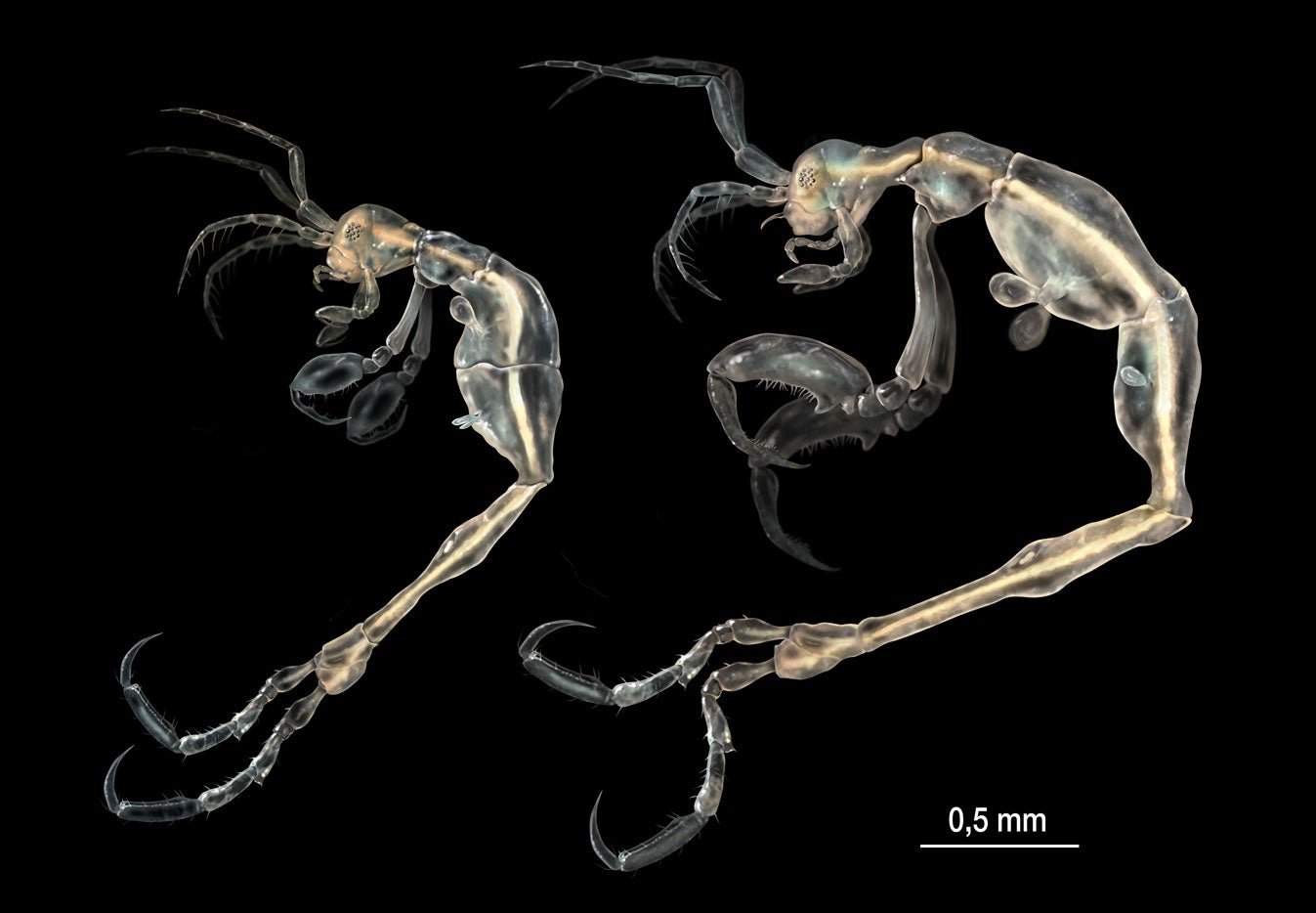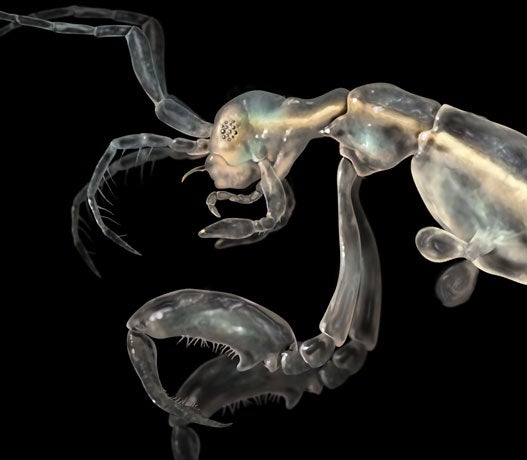New species of terrifying looking 'skeleton shrimp' discovered
The omnivorous ocean-dwellers are thankfully only a few millimetres in length

It’s a truism that the ocean depths will remain Earth’s last great wilderness, and judging by the recent find of a new species of 'skeleton shrimp' there’s still a lot of eye-popping discoveries yet to be made.
Named Liropus minusculus due to their small size, these tiny crustaceans (above) were identified by a research team from the University of Seville and were found living in a reef cave offshore from California’s Catalina Island. The female of the species is on the left and the male on the right, with their descriptions first published 8 October in the journal Zootaxa.
They belong to a family of animals known as Caprellidae, and although the creatures are most commonly identified as ‘ghost shrimps’ or ‘skeleton shrimps’ (a moniker given in recognition of the tiny crustaceans slender, translucent bodies) they are not in fact shrimps, but a type of crustacean known as amphipods.
José Manuel Guerra-García, the lead author of the paper describing Liropus minusculus, first realised that the 'shrimp' constituted an undiscovered species after seeing specimens in a museum in 2010. The find is remarkable as it constitutes the first example of the Liropus genus found in the northeast Pacific Ocean.
Although their claws look fearsome (technically these are gnathopods, described by the Encyclopedia Brittanica as claws “used to grasp females during copulation”) these are tiny creatures just a couple of millimetres in length. Guerra-García has suggested that L. minusculus might in fact be the smallest example of its genus.
Like the similarly proportioned praying mantis, many species of Caprellidae are patient predators, lying in wait for long periods of time before snatching and eating creatures even smaller than themselves.
Their angular bodies and pale colouring also help, allowing them to blend in among the seaweed and vegetation on the sea floor. Although they are occasionally found in the ocean’s deeper climes their preferred habitat is the intertidal and subtidal zone.

Join our commenting forum
Join thought-provoking conversations, follow other Independent readers and see their replies
Comments
Bookmark popover
Removed from bookmarks